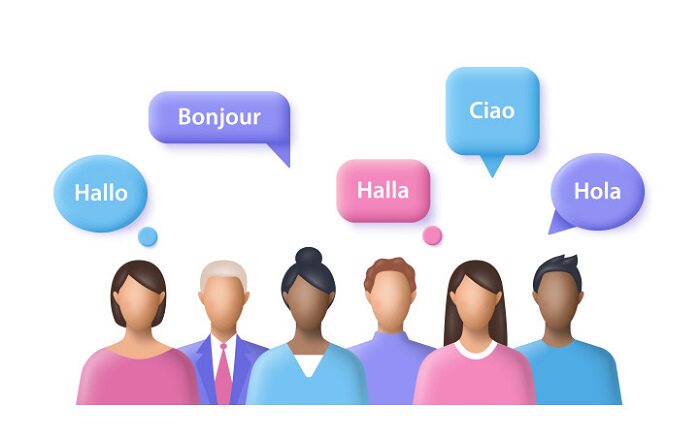How to Reduce Customer Churn Rate - Alibaba Seller

Customer churn rate refers to the percentage of your customers that stopped using your product or service during a given period. It is usually calculated as a measure of the customers you lost during the period divided by the total number of customers you acquired during the period of interest.
Recognize that a certain level of customer churn is unavoidable in business. Yet, as a B2B e-commerce seller, your mission is to minimize this rate significantly. Thus, you need to learn how to reduce customer churn rate to fortify your B2B brand and ensure that it:
- Keeps its existing customers
- Maintains its bottom line and even increases profit and revenue
- Scales and grows
- Gains loyal customers who will in turn become brand advocates and influencers
In this article, we delve into the essentials: understanding diverse churn types (not all are negative), identifying natural vs. concerning churn, uncovering common departure triggers, and actionable steps to slash your churn rate.
Table of Contents
Introduction to Customer Churn Rate
In the current business landscape where customer preferences evolve at the speed of light, being able to retain your customers is of paramount importance. Customer churn can be likened to a leak in a ship’s hull, which left unaddressed, can cause significant damage and eventually, sink the ship.
Whether you're a seasoned entrepreneur navigating the complexities of customer retention or a newcomer on the brink of business success, understanding and proactively countering customer churn is a pivotal step towards sustainable growth.
Understanding Customer Churn Rate
At its core, the customer churn rate, also known as ‘customer attrition rate’, is defined as the percentage of clients who terminate their business relationship with a company within a given period. It is typically calculated as follows:
Customer churn rate = (The number of customers that left over a period of time/The number of customers you had at the beginning of the time) * 100
For example, if you had 1000 customers at the start of the period of interest and 100 of them churned out during the period, the customer churn rate calculation would be:
[(1000-900)/1000] * 100 = 0.1 * 100 = 10%
Therefore, the customer churn rate is 10%.

The churn rate is expressed as a percentage, and this metric is an invaluable mirror reflecting the vitality of a business's customer base. It is also directly proportional to your customer retention rate. The higher your churn rates, the more customers you lose. The lower your churn rates, the more customers you keep in your books. With this percentage, you get critical insights that help you craft effective customer retention strategies.
Different types of customer churn
There are different types of customer churn, namely
- Voluntary churn,
- Involuntary churn
- Seasonal churn,
- Revenue churn,
- Economic churn, etc
The Importance of Reducing Customer Churn Rate
Customer churn rate is a big deal for businesses as at first glance, it shows how well or poorly a business is doing at keeping its customers. But this is not the only reason you should reduce your customer churn rate.
Your customer churn rate has a direct impact on your business’s bottom line, as businesses lose roughly $1.6 trillion each year due to customer churn1. Also, acquiring new customers demands substantial resources, both in terms of time and financial investment. According to Forrester, it costs five times more to acquire a new customer than to retain an existing one2.
Additionally, the cost of acquiring new clientele significantly outweighs that of retaining existing ones, rendering high churn rates a pressing concern. It will also cost you 16 times more to bring a new customer up to the spending level of an existing loyal customer3.
Furthermore, a high customer churn rate undermines your marketing efforts, so reducing your churn rate is vital to your B2B brand sustainability. By doing so, you stabilize your customer base, enhance the overall customer lifetime value and foster unwavering brand loyalty.
Recognizing the Signs of Customer Churn
At every stage of your B2B business, you will have at least four customer types, namely:
- Those signing up for the first time
- Established customers looking to renew their subscription
- Customers who out of dissatisfaction or insufficient funds will churn.
- Churned customers looking to start from where they left off.
Because of this diversity in your customer base, recognizing customer churn may be challenging. Thus, you need to have metrics that track your brand’s transactions with its customers.
Also, you may want to consider having a proactive approach towards managing customer attrition in your B2B business. This will require processes that can help you predict which customers are on the verge of churning so that you can take steps to reel them back in before they make the jump.
This approach is much more valuable than waiting for churn to happen, as by then, it may already be too late. The following shows you what you can do to preempt churn in your business.
Track Customer Engagement
The greatest proof of customer satisfaction and loyalty is engagement. Therefore, if you notice a drop in interactions, reduced frequency of purchase, or a drop in the degree of use of your products or services, you may be on the verge of churning. Utilizing advanced data analytics and sophisticated customer relationship management (CRM) systems can provide in-depth insights into these trends, allowing you to intervene with timely solutions.

Analyzing Customer Feedback
Feedback in the form of surveys, reviews or direct communication provides a treasure trove of insights for you to leverage. If there is a spike in negative feedback or an upswing in complaints, regard them as early warning signals. Another strategy is to actively seek feedback from your customers - before they start complaining.
You may want to consider a quarterly schedule of reaching out to your customers to get feedback about their experience with your brand and intentionally asking for areas of improvement they have observed. Actively seeking feedback and addressing concerns demonstrate a commitment to customer satisfaction, providing opportunities to mend relationships and prevent further fallout.
Monitoring Customer Complaints
Customer complaints are invaluable in showing you areas where your brand is falling short. Though it may be tempting to take those complaints personally, it is best to view them as they are - tools to help you improve your brand. It takes only one bad experience to make 32% of customers stop doing business with a brand they loved4. So, when those complaints come in, be grateful for them and establish a proactive system to monitor and resolve them swiftly before they balloon into substantial churn. Effective complaint resolution can even metamorphose disgruntled clients into ardent brand advocates.
Identifying the Reasons for Customer Churn
Because there are different types of customer churn, identifying the reasons for customer churn would enable B2B business owners to know how best to reduce their customer attrition and increase their customer retention.
Customers leave businesses for various reasons, but the most common reasons are stated below:
Ineffective Customer Service
Inadequate customer service experiences rank high among the triggers for churn. Prolonged wait times, substandard support, and unresolved issues can frustrate customers and push them towards exploring alternatives. And the worst part of this is that these customers may not complain before they leave. Statistics show that 96% of customers will leave a brand after experiencing bad customer service5. Therefore, bad customer service is a major cause of voluntary customer churn in businesses.
Poor Communications
Customer dissatisfaction is often tied to poor communication between customers and service providers. Faltering in effective communication with customers can leave them feeling undervalued and disconnected. Examples of poor communication that can expedite customer churn are, neglecting to communicate product enhancements, promotions, or changes to services.
Lack of Perceived Value
A B2B business that has a lack of perceived value in its product or service will often propel customers towards churn. Lacking perceived value will discourage new customers from engaging with the brand, and encourage existing customers to seek better alternatives elsewhere.
An excellent way to counteract this risk is to consistently highlight the benefits and values of your B2B product offerings using targeted communication. This will encourage the onboarding of new customers and reassure existing customers that they are getting value for their engagement with you.
Strategies to Reduce Customer Churn Rate
Strategies to reduce customer churn rate will largely depend on the causes of the customer churn, but given the common causes of churn among customers, the following tips will help you reduce your customer attrition rate.

Enhancing Communication with Customers
Sustaining open lines of communication with clients is paramount. Tailored emails, informative newsletters, and engaging interactions on social media platforms convey a sense of appreciation and inclusivity. Also, providing regular updates about product enhancements or solutions aligned with customer needs helps fortify their loyalty to your brand.
Delivering Top-Quality Customer Support
Investing in robust customer relationship management systems that provide top-quality support to your customers and ensure prompt and effective resolution of issues. An excellent way to do this would be to provide diverse support channels – from live chat to phone and email – which caters to varying client preferences, thereby elevating satisfaction levels.
Offering Customer Loyalty Programs
Loyalty programs, such as exclusive discounts, rewards, or early access to new offerings, can encourage customer loyalty. Factors to consider when determining when to launch these customer loyalty initiatives include:
- Where are they on their journey with you? If they are nearing the end of their contract with you and you are worried they might not renew, you could offer a renewal discount to encourage them to stick around.
- What are their needs? Sometimes, customers may request a feature which your products do not currently offer. In cases like this, consider offering them a loyalty incentive to buy time while you work on making their requests available.
Alibaba.com's CRM Solutions for Churn Reduction
In the digital age, where interactions transcend borders and languages, customer relationship management (CRM) tools become indispensable in the fight against churn. Alibaba.com, a global e-commerce powerhouse, introduces a suite of CRM solutions tailored to equip businesses with the tools necessary to mitigate churn and fortify client bonds. Features such as business follow-ups, marketing email automation, and real-time translation capabilities streamline communication, ensuring seamless interaction across cultural and linguistic frontiers.
1. Business Follow-Ups
Business follow-ups within a CRM system are indispensable for nurturing customer relationships and maintaining engagement. This feature enables you to schedule and automate timely follow-ups with clients. Whether it's checking in after a purchase, offering assistance, or updating customers about new offerings, automated follow-ups ensure that no valuable connection slips through the cracks.
Benefits of Business Follow-Ups
- Consistency: Automated follow-ups guarantee that every customer receives the same level of attention, regardless of your team's workload.
- Relationship Building: Regular contact demonstrates your commitment to your customers, strengthening their loyalty to your brand.
- Upselling and Cross-Selling: Follow-ups can be used strategically to introduce complementary products or services, driving additional sales.
- Personalization: By tracking customer interactions, you can tailor follow-ups to individual preferences and needs.
2. Marketing Email Automation
Marketing email automation is a time-saving feature that allows you to send targeted and personalized emails to your customers without manual intervention. This feature enables you to set up pre-defined email sequences triggered by specific customer actions, such as signing up for a newsletter or making a purchase.
Benefits of Marketing Email Automation
- Efficiency: Automated email campaigns streamline your marketing efforts, allowing you to reach a wider audience with minimal effort.
- Personalization: Automation tools can segment your audience based on various criteria, enabling you to send relevant content to specific customer groups.
- Timely Engagement: Triggered emails ensure that customers receive relevant information exactly when they need it, enhancing their experience.
- Lead Nurturing: Email automation helps move potential customers through the sales funnel by delivering targeted content at the right stages.
3. Real-Time Translation Capability
In a global marketplace, effective communication transcends language barriers. The real-time translation capability in a CRM system allows you to communicate seamlessly with customers who speak different languages. This feature translates messages and communications in real time, ensuring that language differences don't impede your ability to connect.
Benefits of Real-Time Translation Capability
- Global Reach: Break down language barriers and expand your customer base by communicating with international clients in their native language.
- Enhanced Customer Support: Provide efficient and accurate support to customers regardless of their language preferences.
- Cultural Sensitivity: Effective translation ensures that your communications are culturally sensitive and resonate with diverse audiences.
- Efficient Collaboration: Real-time translation capability supports cross-border collaborations, making it easier for teams to work together across languages.

These features, when harnessed within a CRM system, can transform how you manage customer interactions, market your products, and expand your reach across cultures and languages. By leveraging these capabilities, you position your business for greater success and customer satisfaction.
Start Selling on Alibaba.com
Alibaba.com provides an excellent platform for B2B e-commerce sellers looking to serve a global audience. As a premier online B2B marketplace, Alibaba.com offers unmatched reach to your target audience. In addition, you access several beneficial tools that help you take your business’s marketing and customer retention strategies to the next level.
For example, by harnessing Alibaba.com's CRM offerings and seamlessly integrating them into your client retention strategies, you harness a formidable arsenal to repel churn and cultivate unbreakable customer loyalty - and this is only one of the many tools at your disposal as an Alibaba.com seller.
Get started today and embark on a journey guaranteed to unlock an expansive realm of possibilities.
📌Read more:
References:
1. https://sturdy.ai/solutions/customer-churn
2. https://www.forrester.com/what-it-means/ep04-rethinking-customer-loyalty/
3. https://www.linkedin.com/pulse/6-reasons-why-repeat-customers-better-than-new-henry-tabansi
4. https://www.pwc.com/us/en/services/consulting/library/consumer-intelligence-series/future-of-customer-experience.html#:~:text=In%20the%20U.S.%2C%20even%20when,brand%20after%20one%20bad%20experience
5. https://www.forbes.com/sites/shephyken/2020/07/12/ninety-six-percent-of-customers-will-leave-you-for-bad-customer-service/?sh=484eb74a30f8
Start your borderless business here
Tell us about your business and stay connected.
Keep up with the latest from Alibaba.com?
Subscribe to us, get free e-commerce tips, inspiration, and resources delivered directly to your inbox.














